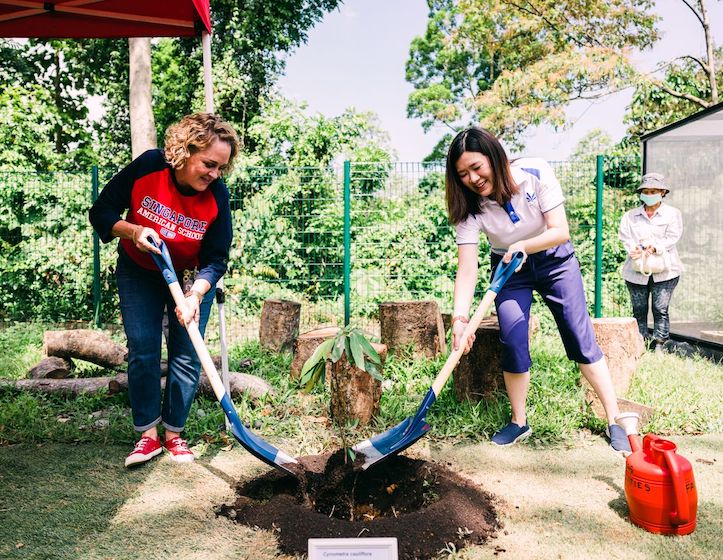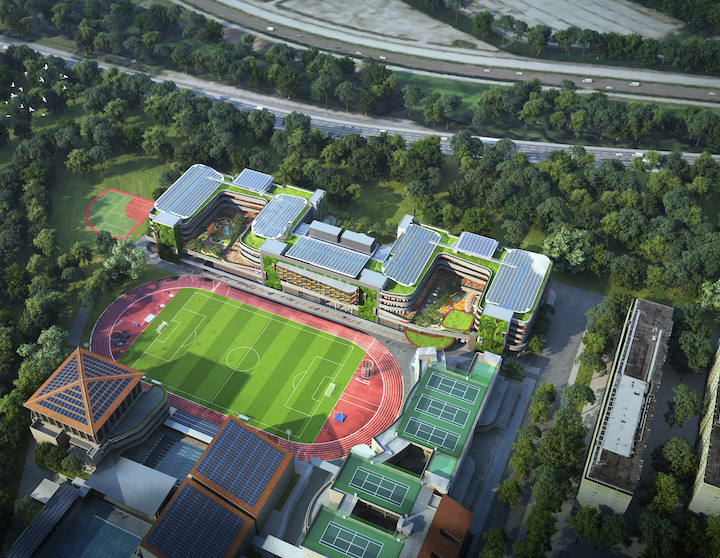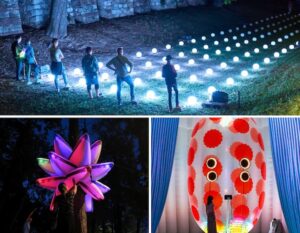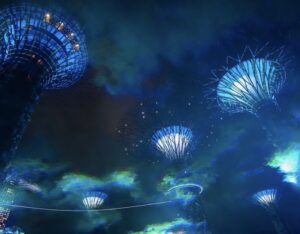
Simon Thomas, Director of Facilities and Services at SAS shares how their approach to sustainability and wellness creates an environment where students are inspired to make impactful changes.
Singapore American School (SAS) continues to strive towards sustainability and environmental stewardship. With SAS Reimagined, our sustainable design vision creates an environment where students can feel and see its significance and are empowered to make changes. The design promotes sustainability education and equips students with knowledge, innovation, and experiences. The campus is a living laboratory, where every corner becomes a potential learning experience, allowing students to explore and engage with sustainability concepts in various aspects of their education.
SAS’ Design Positively Impacts Well-being and Learning
Sustainable building design: SAS Reimagined, our campus upgrade project is designed with sustainability in mind, and features solar panels, rainwater harvesting, and energy-efficient lighting. Focusing on optimizing human performance, we continue to work towards an environment that encourages students and adults to perform at their best and feel well while learning. Biophilic design, good air quality, natural light, and acoustics are part of the SAS Reimagined design process and aim to contribute to overall well-being of our students and educators and offer enhanced learning experiences. SAS has also implemented standards like WELL and the Living Building Challenge to go beyond energy and water efficiency. Factors affecting wellness, such as acoustics, carbon footprint reduction, and even choice of materials, have been taken into consideration throughout the design process.
SAS Leads With a Zero Waste Goal
Sustainable operations: Over the years, SAS has implemented a number of energy-saving measures, such as motion-sensor lights and water-saving fixtures. SAS also has a zero-waste goal and has implemented a number of initiatives to reduce waste, such as composting and recycling. Our sustainability initiatives have helped to greatly reduce our environmental impact, including our carbon footprint, water usage, and waste production.
Students examine local sustainable practices
Student engagement and environmental stewardship: SAS provides students with opportunities to learn about sustainability and environmental stewardship through its curriculum and extracurricular activities. As part of the interdisciplinary sustainability unit sixth grade learning communities at SAS spent time exploring the complexity of sustainability through an introduction to the United Nations Sustainable Development Goals and the Sustainability Compass. They looked at factors that influence sustainability on our nature, society, economy and well-being, and the impact of actions we may take to address issues of sustainability. They also examined local sustainable practices in Singapore’s new Tengah town, with the role of running a sustainable design architecture company and creating a specialized and sustainable HDB apartment in Tengah for their client.

Students convince cafeteria to adopt sustainable cutlery
Sustainable dining: SAS continues to build a culture centered around sustainability and wellness. Sustainability is integrated into the curriculum and daily practices. A few years ago, early learning center students began a research project and learned about recycling in Singapore. After collecting over 200 plastic forks and spoons in just three weeks, students demonstrated empathy for the natural world. They prepared a persuasive presentation for Mr. Tan who runs the high school cafeteria and convinced him to offer metal forks and spoons to the children in the early learning center and spread the word to other parts of the school. Did you know that we serve sustainably-sourced food in its cafeterias, and students are encouraged to bring their own reusable lunch boxes?
Encouraging community and ecological awareness
Collaboration with the community: Located in a quiet enclave of Woodgrove, next to the West Fields at SAS, the SAS Community Garden offers 99 plots for neighbouring residents. Gardeners come in every day to nurture their greens, find a space to relax and bond, and socialize with fellow gardeners. “The community plays a key role in the stewardship for nature, and this partnership with Woodgrove Community is instrumental in encouraging cooperation, volunteerism, a respect for diversity, and ecological awareness among those who engage in this work,” said SAS Superintendent Tom Boasberg.
We are proud to be a leader among international schools in environmental sustainability practices and we strive to involve students in being good stewards of the environment. As we renovate our world-class campus, we continue to work toward more indoor/outdoor connections that use fans instead of air conditioning, water-saving turf on fields, energy-efficient lighting, the use of materials certified to be low in volatile organic compounds, and utilize wood from managed forests mixed with recycled content. Click here for more information on the SAS Reimagined campus upgrade project.
If you’d like your child to benefit from an education that prepares them for the future by taking sustainability and environmental stewardship seriously, get in touch with SAS today!
![]() Singapore American School, 40 Woodlands Street 41, Singapore 738547, Tel: (+65) 6363 3403, www.sas.edu.sg
Singapore American School, 40 Woodlands Street 41, Singapore 738547, Tel: (+65) 6363 3403, www.sas.edu.sg






 View All
View All




 View All
View All









 View All
View All




